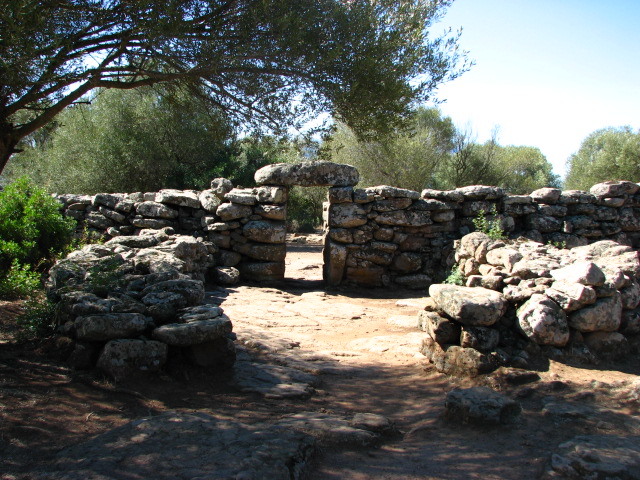On the SS127 about 5km east of Tempio, and directly opposite a sign “Nuchis 1”, is the signposted turn to Pascaredda. Follow the track over the unmaned railway crossing and keep to the left fork as signposted. About 800m from the main road, there’s a large parking area, but we took the sharp right turn before it, and parked 250m or so further on, just before the riverlet mentioned in TME (OK for small cars, and there’s space to turn round just past the stream).
Free and open access.
We strolled up the path, with buzzing of thousands of insects filling our ears and butterflies and dragonflies flitting around, over the bridge and to the rear of the tomb.
A stunning spot! The trees are cork oaks and had had their bark stripped for the autumn harvest. Of the stele, only the bottom half is left; the 10 slabs on either side mark out the esedra, and a missing capstone lets you climb into the funeral corridor itself, and the sides of the corridor are buried with the earth bank rather than being exposed stone as we’d seen at other sites.
Again the granite had a pink tinge as we’d seen at Coddu Vecchiu and at the back of the funeral corridor, there’s a shelf, as we’d seen at Li Lolghi.




































